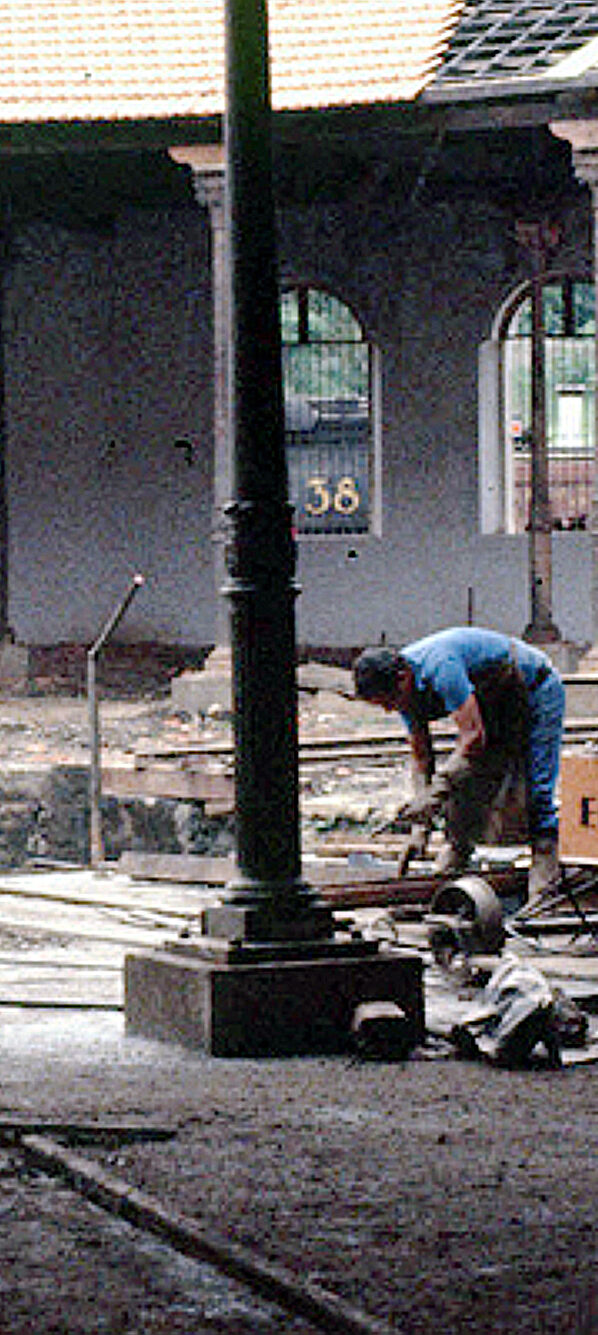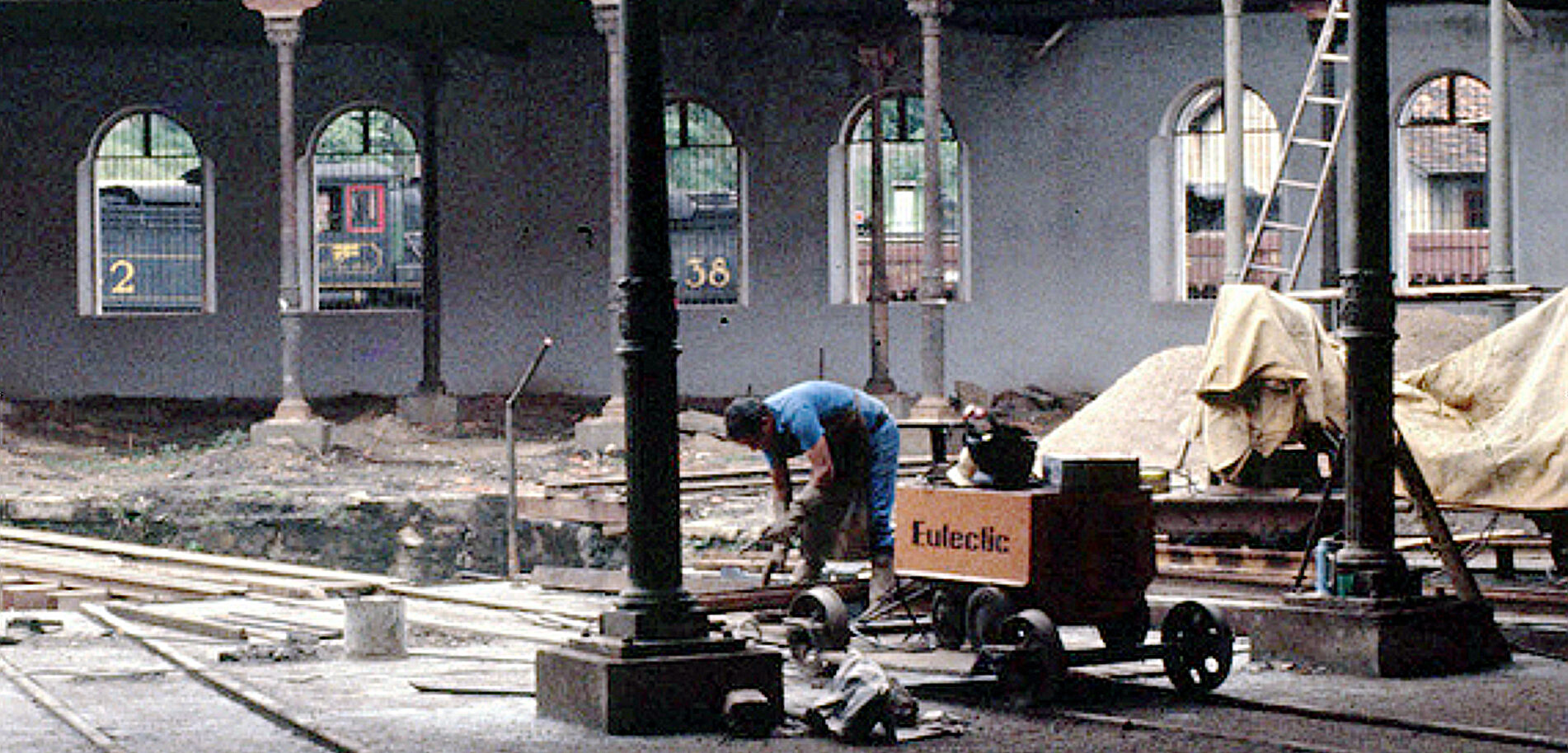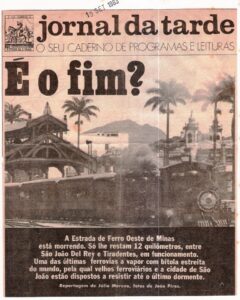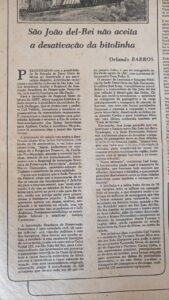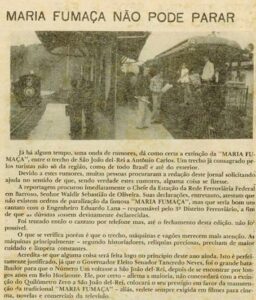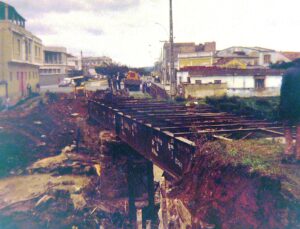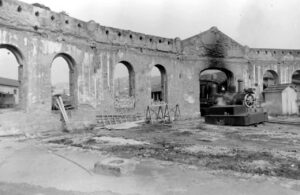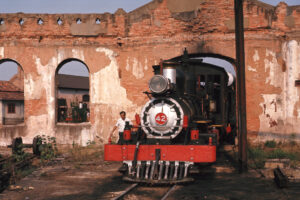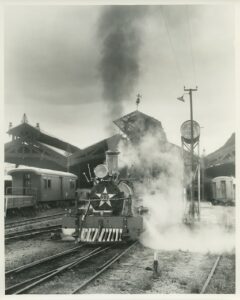
LOCOMOTIVE IN THE SÃO JOÃO DEL-REI PLATFORM
Ron Ziel, 1970's. Welber Santos's personal collection.
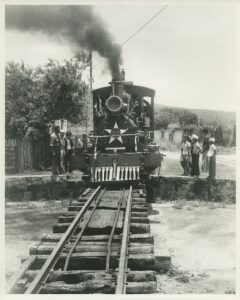
LOCOMOTIVE 37 IN THE TURNTABLE
Ron Ziel, 1970's. Welber Santos's personal collection.
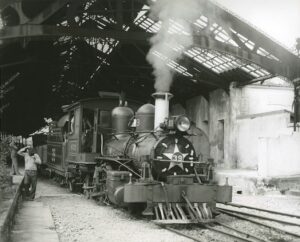
LOCOMOTIVE 39 IN THE SÃO JOÃO DEL-REI PLATFORM
Ron Ziel, 1970's. Welber Santos's personal collection.
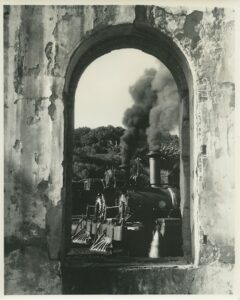
LOCOMOTIVES IN THE ROUNDHOUSE
Ron Ziel, 1970's. Welber Santos's personal collection.
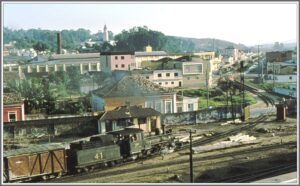
EXIT TO THE AVENIDA LEITE DE CASTRO
Herbert Graf, 1979. Welber Santos’s personal collection.
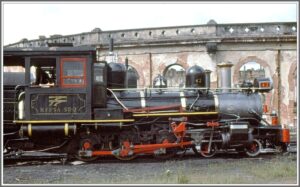
LOCOMOTIVE 42 IN FRONT OF THE ROUNDHOUSE
Herbert Graf, 1979. Welber Santos’s personal collection.
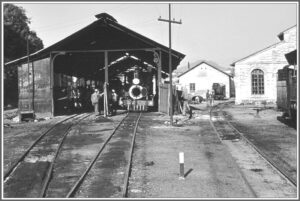
LOCOMOTIVE IN THE WORKSHOP
Herbert Graf, 1979. Welber Santos’s personal collection.
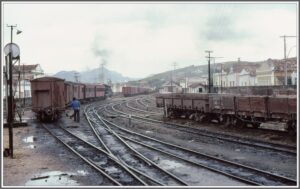
SÃO JOÃO DEL-REI'S RAILWAY YARD
Herbert Graf, 1979. Welber Santos’s personal collection.
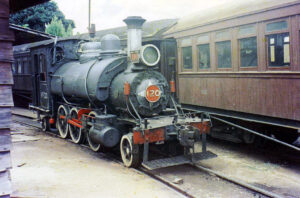
LOCOMOTIVE 120
Ramiro Nascimento, 1981. Welber Santos’s personal collection.

LOCOMOTIVE 37
Herbert Graf, 1979. Welber Santos’s personal collection.
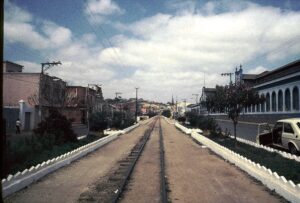
AVENIDA LEITE DE CASTRO
Ramiro Nascimento, 1981. Welber Santos’s personal collection.
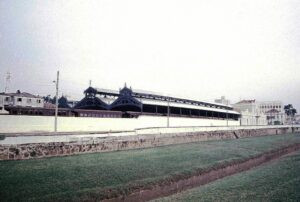
SÃO JOÃO DEL-REI STATION
Ramiro Nascimento, 1981. Welber Santos’s personal collection.
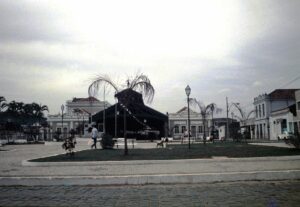
Railwaymen’s Square
Ramiro Nascimento, 1981. Welber Santos’s personal collection.

LOCOMOTIVE 42 AND 60 IN THE YARD
Mario Arruda, 1983. Welber Santos’s personal collection.
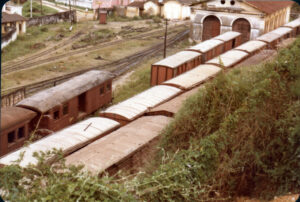
EXIT OF THE RAILWAY COMPLEX
Mario Arruda, 1983. Welber Santos’s personal collection.
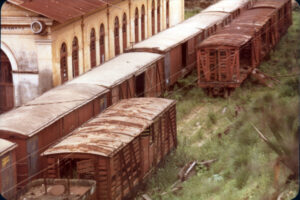
WAGON IN THE YARD
Mario Arruda, 1983. Welber Santos’s personal collection.
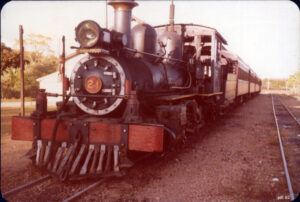
LOCOMOTIVE 21
Mario Arruda, july of 1982. Welber Santos’s personal collection.
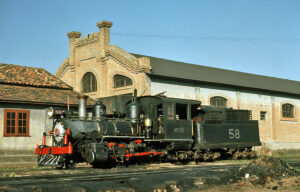
LOCOMOTIVE 58 NEXT TO THE WORKSHOPS
Jim Livesey, 1976. Welber Santos’s personal collection.
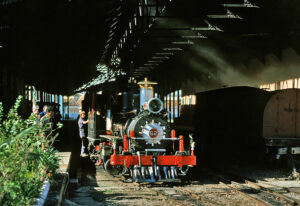
LOCOMOTIVE 62 IN THE PLATFORM
Jim Livesey, 1976. Welber Santos’s personal collection.

LOCOMOTIVE 69 AT THE TURNTABLE
Jim Livesey, 1976. Welber Santos’s personal collection.

LOCOMOTIVE NEAR THE RIVER
Jim Livesey, 1976. Welber Santos’s personal collection.
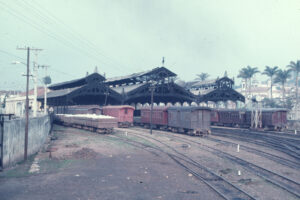
WAGONS IN THE PLATAFORM
Guido Motta, 1974. Welber Santos’s personal collection.
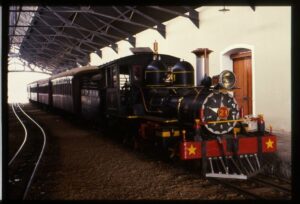
LOCOMOTIVE 21 IN THE PLATFORM
Christopher Beyer, 1989. Welber Santos's personal collection.

LOCOMOTIVE 42
Christopher Beyer, 1989. Welber Santos's personal collection.
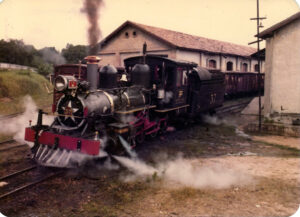
LOCOMOTIVE 37 IN THE RAILROAD YARD
Walter Serralheiro, 1978. Welber Santos’s personal collection.
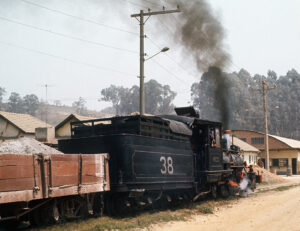
LOCOMOTIVE 38 IN BARROSO
James Waite, september 1977. Welber Santos’s personal collection.

WAGON INSIDE THE ROUNDHOUSE
Christopher Beyer, 1989. Welber Santos's personal collection.
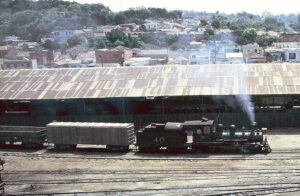
LOCOMOTIVE 40 NEAR THE WORKSHOPS
Ramiro Nascimento, 1981. Welber Santos’s personal collection.
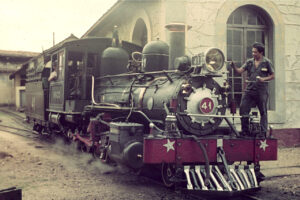
RAILWAY WORKERS WITH LOCOMOTIVE 41
Guido Motta, 1972. Welber Santos’s personal collection.
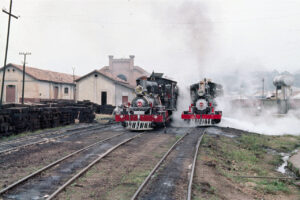
LOCOMOTIVES 41 AND 66
Guido Motta, 1974. Welber Santos’s personal collection.
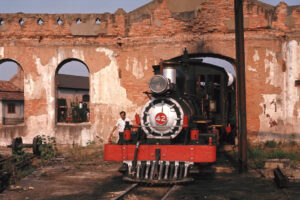
LOCOMOTIVE 42 AT ROUNDHOUSE DOOR
James Waite, september 1977. Welber Santos’s personal collection.
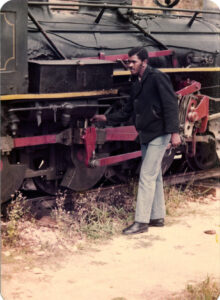
MAN NEAR A LOCOMOTIVE
Walter Serralheiro, 1978. Welber Santos’s personal collection.

LOCOMOTIVE 43 FUELING IN THE WATER TANK
Walter Serralheiro, 1978. Welber Santos’s personal collection.

LOCOMOTIVE IN THE RAILS
Walter Serralheiro, 1978. Welber Santos’s personal collection.

RAILWAY WORKER FUELING A LOCOMOTIVE
Walter Serralheiro, 1978. Welber Santos’s personal collection.

RAILWAY WORKERS AND LOCOMOTIVE NUMBER 66
Guido Motta, 1974. Welber Santos’s personal collection.
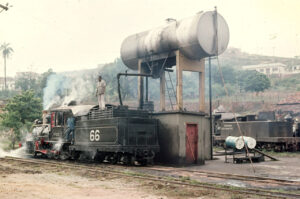
LOCOMOTIVE 66 BY THE WATER TANK
Guido Motta, 1974. Welber Santos’s personal collection.

LOCOMOTIVE AT NIGHT
James Waite, september 1977. Welber Santos’s personal collection.
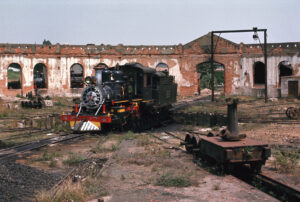
LOCOMOTIVE IN THE TURNTABLE
James Waite, september 1977. Welber Santos’s personal collection.
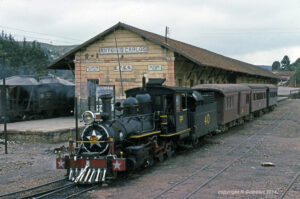
LOCOMOTIVE 40 IN THE ANTÔNIO CARLOS STATION
Rainhard Gumbert, unknown date. Welber Santos's personal collection.
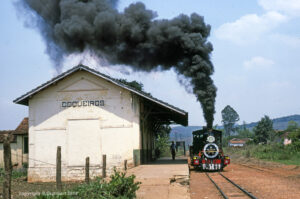
LOCOMOTIVE IN COQUEIROS STATION
Rainhard Gumbert, unknown date. Welber Santos's personal collection.
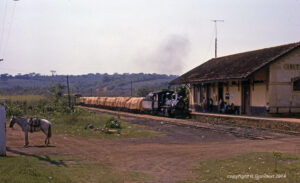
LOCOMOTIVE 62 IN IBITURUA STATION
Rainhard Gumbert, unknown date. Welber Santos's personal collection.
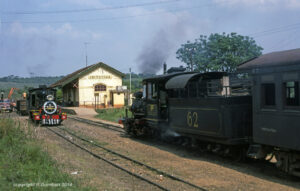
LOCOMOTIVES IN IBITURUNA STATION
Rainhard Gumbert, unknown date. Welber Santos's personal collection.
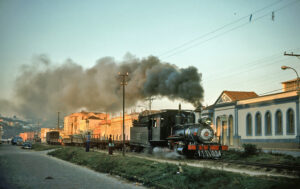
LOCOMOTIVE 55 IN AVENIDA LEITE DE CASTRO
Jim Livesey, 1976. Welber Santos’s personal collection.
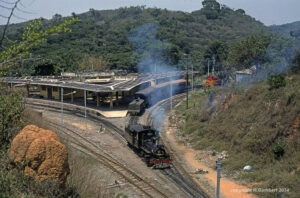
LOCOMOTIVES IN AURELIANO MOURÃO STATION
Rainhard Gumbert, unknown date. Welber Santos's personal collection.
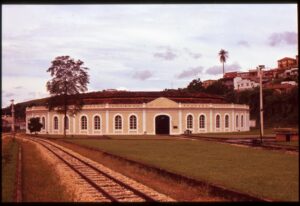
ROUNDHOUSE
Christopher Beyer, 1989. Welber Santos's personal collection.
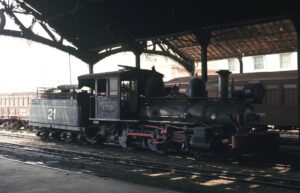
LOCOMOTIVE 21 IN THE PLATFORM
James Waite, september 1977. Welber Santos’s personal collection.
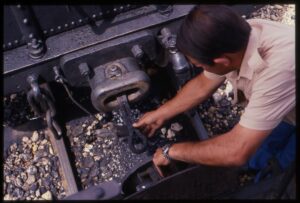
RAILWAY WORK IN THE TRACKS
Christopher Beyer, 1989. Welber Santos's personal collection.
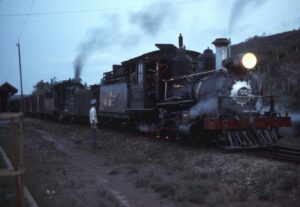
RAILWAY WORKER WITH LOCOMOTIVE NUMBER 55
Jeffrey Stebbins, 1977. Welber Santos’s personal collection.
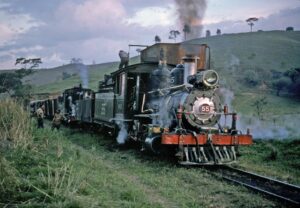
RAILWAY WORKERS AND LOCOMOTIVE 55
Jeffrey Stebbins, 1977. Welber Santos’s personal collection.
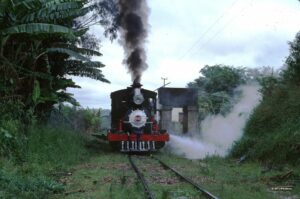
LOCOMOTIVE 55 IN THE WATER TANK
Jeffrey Stebbins, 1977. Welber Santos’s personal collection.
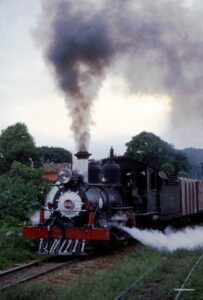
LOCOMOTIVE 55 RELEASING STEAM
Jeffrey Stebbins, 1977. Welber Santos’s personal collection.
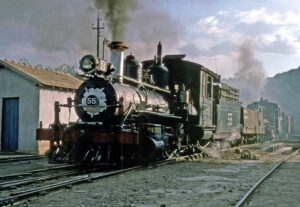
LOCOMOTIVE 55 PARKED IN THE STATION
Jeffrey Stebbins, 1977. Welber Santos’s personal collection.





